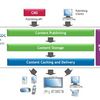By Erin Harrison
Hopefully, you have been an avid follower of the Alcatel-Lucent (ALU) Market & Consumer Insight (MCI) team’s recently concluded three-week India journey across urban and rural parts of the states of Gujarat, Tamil Nadu and the National Capital Region (NCR). As it came to a close, the group culled several important insights on neo-urbanization:
- How it has been unfolding
- The impact it is having
- The role of information and communication technologies (ICT) as a driver
As seen through all of the posts from the team members, and the series of items I have described in previous blogs, neo-urbanization is modernizing many areas of the world that were previously without access to healthcare, education, employment – and technology. In particular, parts of India are becoming networked hubs that are oriented and planned around smart functionality and sustainability.
Based on preliminary findings, each of the three locations – Gujarat, Tamil Nadu and the NCR – represents different stages of neo-urbanization. However, combined, they have allowed the MCI group to capture neo-urbanization in most of its gradations, according to a the final blog post that summarizes highlights of the three-week journey.
NCR is an example of the impact of new and rapidly established industries on the local population, while Ahmedabad (Gujarat state) captured the optimism of being on the path towards a smart city of the future smart about to be created on the periphery of the city.
“Similarly, Coimbatore (Tamil Nadu) provided compelling examples of ICT-enabled development and governance – great models for other parts of the world, especially for those in emerging markets,” wrote Revital Marom, head of the Market and Consumer Insight (MCI) at Alcatel-Lucent.
For example, the group discovered that while ICT usage beyond voice is present only in “faint traces” with the computer entering urban homes, Internet accessibility in cyber cafes it is still perceived to be expensive.
Ultimately, the MCI team has determined a need for accessibility to government initiatives and schemes, which, powered by ICT-enabled solutions that ALU views as integral to its corporate responsibility, could really make a difference to the lives of those living there.
While the three areas the group traveled to have differences, they also share a common trait: a strong need for ICT-enabled development.
“This development will be critical in order to deal appropriately with the opportunities and implications of an increasingly neo-urbanized world,” Marom said.
The MCI group will share a final report and outcomes of this research. In the meantime, if you have any questions or comments about this project, Alcatel-Lucent invites you to email [email protected].











